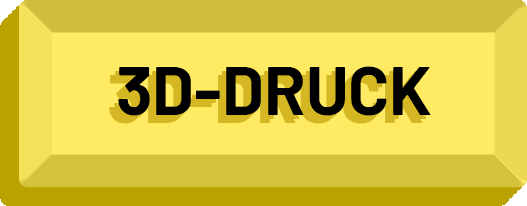Inbus® & Verbus: The eventful history of the Bauer & Schaurte screw factory.
Who is Bauer & Schaurte
and why are they so important?
Bauer & Schaurte is a German company founded in 1876 by Georg Bauer and Christian Schaurte. The company is best known for the invention of the Inbus® screw and the Verbus screw screw. However, the idea of a hexagon socket screw was by no means new. In 1910 William G. Allen patented a manufacturing process for screws with a hexagonal drive profile in the screw head. In the USA, these screws are therefore called "Allen screws" and the hexagon socket wrench is often called "Allen key".
Also of interest: The Standard Pressed Steel Company (SPS) is said to have developed Allen screws independently of Allen in about 1911. SPS's motivation was to develop set screws without protruding screw heads and thus increase machine safety. (Clothes can get caught on protruding screw heads; a recessed grub screw eliminates this risk.) The inspiration was SPS internal square-head screws from the UK (Robertson screw), which SPS did not want to use due to cost and patents. It is not known how SPS manufactured the screws. However, since Allen only held the patent for a specific manufacturing process, Allen's patent could be circumvented if necessary.
In 1936, Bauer & Schaurte patented this type of screw in Germany and introduced it to the market. The technique was developed among others by Walter Beduwé, then chief engineer, further developed and perfected it.
What is Inbus®?
The Allen® screw (Innense hexagon head screw Bauer und Schaurte) is a self-centering screw specially developed for space-saving and secure joining of metals. In this type of screw, an internal hexagon is countersunk in a cylindrical screw head. Compared to the hexagon head screw (with external hexagon head), less space is required for the head. Compared to a Phillips screw of the same size, a hexagon socket screw can absorb about ten times the torque. Hexagon socket screws are well suited for screw connections where the screw heads are difficult to access due to the design. It is sufficient if the head can be reached from above, for example through a hole whose diameter is larger than the corner dimension of the respective wrench. With wrenches whose tip is ground spherically, the screws can be tightened and loosened even if the wrench and screw are not aligned. Hexagon socket screws can also be countersunk to save space if protruding screw heads are a nuisance.
What is Verbus?
Eight years earlier, Neuss engineers were said to have developed the Verbus screw (verhardened hexagon head screw Bauer und Schaurte) have developed. It is a screw produced by solid forming and chipless, which has an uninterrupted grain. In contrast to the screw machined from the solid, the waste is lower and the screw is stronger, since it is not cut under the head but swaged.
Both screws are still used today in industry and crafts all over the world.
What happened then?
From 1980 onwards, the history of the Bauer and Schaute company became somewhat turbulent. There were several takeovers by various companies. First there was a merger as a subsidiary of Saarstahl to Bauer & Schaurte Karcher GmbH (BSK) until Saarstahl went bankrupt in 1993. Then there was a takeover from the Valois Group, then Textron, until in the end Withesell took over the company in 2013. In 2015, Withesell was then sold to Nedschroef Holding, which still exists today.
- 01.07.1876 Foundation of the company founded by Christian Schaurte and Georg Bauer
- 1917 Takeover from Werner T. Schaurte
- 1936 Patenting of the Inbus brand in Germany
- 1970 Takeover of Funcke and Hueck in Hagen (more)
- 1980 Merger with Karcher-Schraubwerke to form Bauer & Schaurte Karcher GmbH (BSK) as a subsidiary of Saarstahl
- 1993 Insolvency of Saarstahl and thus also for BSK
- 1994 Takeover by the Valois Group to form Bauer & Schaurte Karcher Verbindungstechnik GmbH
- 1996 Acquisition of Textron to form Textron-Fastening-Systems
- 2006 Acquisition by another investor to Acument Global Technologies, who are still licensee of TORX among others (more)
- 2013 Acquisition by an American investor Whitesell
- 2014 Closure of the plant in Neuss
- 2015 Sale of Whitesell to the Dutch company Nedschroef Holding (more)
And now?
On the former factory site of Bauer & Schaurte, north of the Neuss main train station, an Inbus® quarter is to be built. On the one hand, it is to be a monument, but also create urgently needed living space. On 16.09.2020 there was a walk-through for this purpose where some historical documents were recovered. Dr. Albert Wunsch has created an interim exhibition where anyone who wishes can view the salvaged documents and equipment. Other relics can be viewed in the Neuss City Archives for a closer look.
Something about the license rights of "Inbus®".
From 1970, the Bauer and Schaute company had the corresponding hexagon socket wrenches made by the company Hafu Werkzeugfabrik GmbH in Hagen, Germany. After a very eventful company history, 29-year-old Fabian Fuhrmann the rights to the Inbus® brand. Fabian Fuhrmann is the descendant of Hans Jürgen Fuhrmann, who founded Hafu Werkzeugfabrik.
The companies founded for this purpose Inbus Werkzeug GmbH and the Inbus IP GmbH are really serious about licensing rights. There has been a veritable wave of warnings - but without penalties. Because the Fuhrmanns want to establish and expand the brand. Today, HaFu is still one of the world's leading manufacturers of hexagon socket and TORX® tools.
Are you interested in hexagon socket screws?
We from WEWO see ourselves as problem solvers and are there to help you with your questions in word and deed. We offer solutions for your application problems and a large product range from which you can draw!
Please feel free to contact us or have a look in our store:
